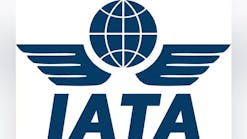This article is part of series, Aircraft Towing 101, dedicated to helping ground service personnel safely park aircraft on the ramp.
Safety is for everyone at a fixed-base operator (FBO) and that includes anyone involved in aircraft towing, according to Pete Johnson, director of sales and service, Americas at Aero Specialties. He emphasizes eight important details crucial to safe towing operations.
8 Essential Tips for Safe Aircraft Towing
These include:
- Safety should be first, always. Regardless of experience, prioritize safety above all else.
- Learn continuously. Encourage ongoing training and stay updated on best practices.
- Avoid complacency. Remind everyone that even experienced individuals can make mistakes if they become complacent.
- Use clear communication. Stress the importance of effective communication among team members.
- Respect equipment and aircraft. Encourage proper equipment use and maintenance and treat aircraft carefully.
- Adaptability is key. Be flexible and willing to adjust plans.
- Lead by example. Experienced individuals should set a positive example for safe practices.
- Stay humble and open-minded. There's always more to learn, so remain open to new ideas and techniques.
“By emphasizing these messages and lessons,” Johnson says, “you can help ensure that all individuals involved in aircraft towing operations, including experienced professionals, remain focused on safety, continuous improvement and professionalism.”
Aircraft Towing: 8 Tips for Beginners
Handling an expensive aircraft safely can be overwhelming to new members of the ground handling industry.
According to Johnson, anyone learning to tow aircraft should keep these eight tips in mind:
- Safety is paramount, prioritize it above all else.
- Understand your equipment.
- Communicate clearly with your team.
- Stick to established procedures.
- Stay patient.
- Remain alert to your surroundings.
- Seek guidance from experienced colleagues as you learn and grow in this essential aspect of ground handling operations.
- Remember towing aircraft is a skill that improves with practice and experience.
“Take it one step at a time, prioritize safety and don't hesitate to seek assistance when needed,” advises Johnson.
Avoid These 7 Common Aircraft Towing Mistakes
Unfortunately, makes mistakes happen. According to Johnson, common mistakes to avoid when towing aircraft include:
- Skipping safety checks on towing equipment.
- Ignoring communication protocols.
- Taking shortcuts in maneuvering.
- Overlooking environmental factors.
- Improper use of equipment.
- Lack of training or experience.
- Rushing procedures at the expense of safety.
“Avoiding these shortcuts and mistakes is crucial to ensure safe aircraft towing operations,” advises Johnson.
7 Aircraft Towing Best Practices Every FBO Should Follow
When it comes to towing procedures, FBOs should adhere to industry best practices and standards to ensure safe and efficient ground handling operations. These include all relevant aviation regulations and guidelines set forth by the International Air Transport Association (IATA) and the International Business Aviation Council (IBAC), as well as by regulatory authorities, including the Federal Aviation Administration (FAA) in the United States and the European Union Aviation Safety Agency (EASA) in Europe.
IATA offers general guidelines for aircraft towing procedures, emphasizing safety, equipment suitability, effective communication, area clearance, towing techniques and emergency procedures. FBOs and ground handling providers adapt these principles into their specific towing protocols, considering regulatory requirements and operational needs.
IBAC’s International Standard for Business Aircraft Handling (IS-BAH) is another resource specifically created to enhance the safety and efficiency of business and general aviation ground handling.
Most FBOs have established guidelines for towing with comprehensive standard operating procedures (SOPs) that outline proper towing procedures, including a pre-tow check, equipment usage, communication protocols and emergency procedures, says Johnson.
Specific training and certification requirements for ground handling staff involved in aircraft towing operations at FBOs can vary depending on local regulations, type of aircraft and FBO policies.
“FBOs should ensure that their ground handling staff receive comprehensive training and certification to perform aircraft towing operations safely and efficiently, contributing to the overall safety and success of the FBO's operations,” Johnson says.
Training programs and certification vary by FBO.
Johnson says AERO Specialties assists its customers with recommendations and provides references to proper towbar use and maintenance.
7 Strategies for Common Challenges
Aircraft towing operations face common challenges. Some are daily, others are once in a while.
Johnson outlines strategies to address these common challenges.
- Limited maneuverability – Aircraft can be challenging to maneuver, especially in congested areas. Ground handling staff should be trained on proper towing techniques, including maneuvering in tight spaces and congested areas. Clear signage and designated pathways on the ramp should facilitate safe and efficient towing operations. Wing walkers should also be employed when the operation requires additional eyes.
- Variable weather – Adverse weather conditions can impact towing operations. Ground handling staff should monitor weather forecasts regularly and plan towing operations accordingly. They should also consider rescheduling or adjusting operations during adverse weather conditions.
- Communication – FBOs should establish and implement clear, standardized communication protocols between ground and flight crews, including using radios, hand signals, or electronic communication devices. In addition, regular training sessions should be conducted to ensure all personnel are familiar with communication procedures and can effectively relay instructions and information during towing operations.
- Equipment maintenance – FBOs should develop a comprehensive maintenance program for towing equipment, including regular inspections, servicing, and repairs as needed, and a system should be implemented for tracking equipment maintenance schedules and ensuring compliance with manufacturer recommendations and warranty requirements.
- Ramp management – FBOs should collaborate with airport authorities and other FBOs to develop and implement ramp management procedures to minimize congestion and optimize space utilization.
- Adherence to procedures – FBOs should provide thorough training to ground handling staff on towing protocols, including weight and balance considerations, aircraft-specific procedures and regulatory requirements. Accountability measures, including regular audits and performance evaluations, should be implemented to ensure strict adherence to towing procedures.
- Safety culture – FBOs should foster a safety culture within the organization by promoting awareness, accountability and continuous improvement in safety practices. This can be done by encouraging open communication and reporting safety concerns or near-misses to identify areas for improvement and implement corrective actions.
Technology can assist towing operations. For instance, by integrating AERO Specialties’ SiPsHitch Linear Force Monitoring System into aircraft pushback tugs and tow tractors, operators gain real-time alerts to potential overstress situations, mitigating the risk of costly damage to aircraft, tugs and other equipment.
“It offers additional benefits such as operator performance improvement, training support and comprehensive data logging capabilities. The system eliminates uncertainty by recording all forces applied to the nose gear, providing invaluable protection for pilots and service providers,” Johnson says.
By implementing these strategies, Johnson notes FBOs can effectively mitigate the challenges associated with aircraft towing operations and ensure safe and efficient ground handling practices.






